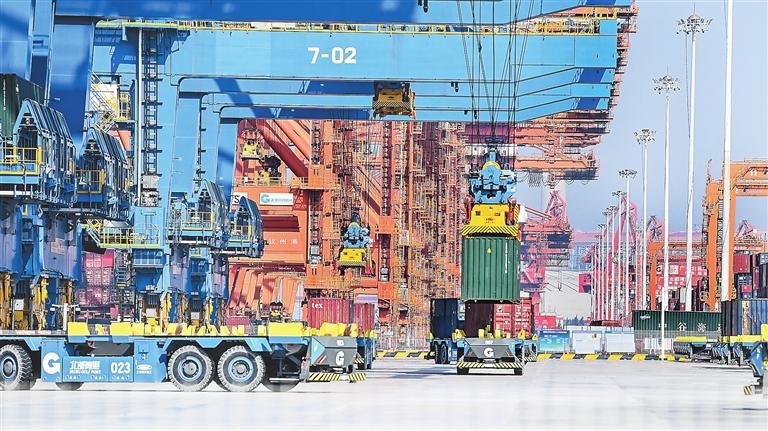

WHILE a recession risk still hangs over the global economy, the ongoing “two sessions” in China reassured investors and businesses that the world’s second-largest economy is bouncing back from COVID-19 shocks and will continue to serve as a strong growth driver for the globe. On Sunday, an array of much-anticipated economic targets for 2023 were unveiled in a government work report, which is deliberated and discussed by national legislators and political advisors who are gathering in the Chinese capital Beijing for their annual meetings, also known as the “two sessions.” According to the report, the country’s gross domestic product (GDP) is projected to expand by around 5% year on year. Other targets include about 12 million new urban jobs and an inflation rate at about 3%, as measured by the CPI (consumer price index). After the slower 3% economic growth recorded last year, the rebound envisioned in the report, along with a series of pro-growth measures from expanding domestic demand to modernizing the industrial system and attracting foreign investment, offered a fresh shot of confidence in the resilience and prospects of the Chinese economy. China has the ability to meet its growth target, said economist Yu Miaojie, president of Liaoning University and a national legislator, noting that business activities and people’s lives have been returning to normal swiftly and that domestic growth momentum has been gathering steam since the beginning of the year. “For a big developing country like China, high-quality development requires an adequate growth rate, and we need to promote a full economic recovery as quickly as possible,” said Liu Shangxi, head of the Chinese Academy of Fiscal Sciences and a national political advisor. In fact, there have been increasing signs that the economy is roaring back, as proved by humming machines in factories and the reappearing hustle and bustle at tourist attractions. The purchasing managers’ index for China’s manufacturing sector came in at 52.6 in February, rising for two consecutive months and marking the strongest reading since April 2012. As evidence of improving consumer sentiment, tourism revenues surged 30% year on year and cinemas nationwide reported the second-highest box office revenues on record during the weeklong Spring Festival holiday in January. More cities witnessed month-on-month increases in home prices in January, indicating a stabilizing property market. A CNN report quoted Julian Evans-Pritchard, head of China economics at Capital Economics, as saying that China’s latest “exceptionally strong” data confirmed a “very rapid rebound” in economic activity. Given the quick turnaround, the executive believes his firm’s 5.5% growth forecast for China this year may be a bit conservative. Reaching these goals is no easy task. Despite the upward trend, Sunday’s government work report warned of external challenges from lingering high inflation and weakening economic and trade growth globally, and said the foundation for stable growth at home also needs to be consolidated. To brave challenges, a spate of pro-growth policies were announced in the report, including a 3% deficit-to-GDP ratio, a priority given to the recovery and expansion of consumption, 3.8 trillion yuan (about US$550 billion) of special-purpose local government bonds, and continued tax and fee cuts to relieve the burdens for businesses. The new measures struck chords among lawmakers and political advisors participating in the “two sessions.” Maintaining the necessary government spending intensity will help promote full economic recovery, said Zhang Lianqi, vice chairman of the Chinese Tax Institute and a national political advisor. Wang Changlin, president of the Academy of Macroeconomic Research and a national political advisor, stressed the need to let consumption recover and reemerge as the main economic driver. Li Xiehua, president of Chinalco Advanced Manufacturing Co., Ltd. and a legislator, said his business has benefited greatly from favorable policies over the past years and after reading about the new ones, he is reassured and more confident. With goals established and solid actions in the pipeline, the promising picture of the Chinese economy painted during the “two sessions” was echoed across the world. Remarking on the headline GDP target, Kevin Kang, KPMG China’s chief economist, said it is much higher than most of the world’s major economies and predicts China will overshoot the target by recording a 5.7% growth rate. China will continue to be one of the major countries to see the strongest growth this year, and its contribution to global economic growth will stand at 30%, said Steven Barnett, IMF senior resident representative in China. Most recently, rating agency Moody’s raised its forecast for China’s growth from 4% to 5% for both this year and 2024. China is the only major economy in the world on track to see decent growth in both corporate profits and GDP in 2023, according to a report in the magazine Barron’s. “Given China’s appetite for energy, autos, and much more, China’s growth is good news for the global economy, which raises the odds that the world can avert a recession, even as the United States and Europe slow,” it says. (Xinhua) | 
